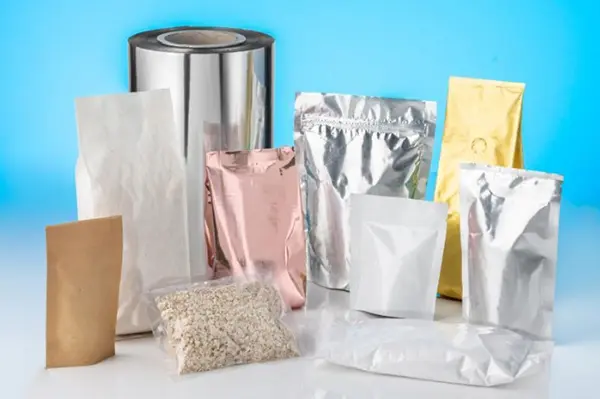Flexible packaging has transformed the way products are packaged and delivered, offering benefits such as lightweight materials, customizable shapes, and enhanced product protection. Used in industries like food and beverages, pharmaceuticals, cosmetics, and consumer goods, flexible packaging provides an eco-friendly and efficient solution. But how exactly is flexible packaging made? This article explores the key stages of the flexible packaging process, from material selection to production techniques and the final quality control steps.
1. Material Selection
The first step in the flexible packaging process is choosing the right materials for the job. Flexible packaging can be made from various materials depending on the product’s needs. These materials must provide the necessary protection against moisture, light, oxygen, and contamination while maintaining the flexibility that defines this type of packaging. The three main materials used are:
- Plastics: Commonly used for their durability, flexibility, and ability to create airtight seals. Plastics such as polyethylene (PE), polypropylene (PP), and polyethylene terephthalate (PET) are popular for food and beverage packaging, personal care items, and household goods.
- Paper: Often used for its eco-friendly qualities, paper can be coated or laminated to improve its resistance to moisture and grease, making it suitable for packaging dry goods and some food items.
- Aluminum Foil: Known for its excellent barrier properties, aluminum foil is used in packaging products that need protection from light, moisture, and air. It’s often used for food, pharmaceuticals, and ready-to-eat meals.
In some cases, a combination of these materials is used to achieve specific barrier properties, such as laminating plastic with aluminum foil or coating paper with plastic to create multi-layered packaging.
2. Extrusion and Lamination
Once the materials are selected, the packaging production process typically begins with extrusion. Extrusion is a manufacturing technique in which plastic resins are melted and forced through a die to create a continuous sheet or film. This film serves as the base layer of the flexible packaging.
For more complex packaging, lamination is often used. Lamination involves bonding two or more layers of material together to create a composite structure that combines the best properties of each material. For example, a plastic layer may be laminated with aluminum foil to create a barrier-resistant packaging for sensitive food items or pharmaceuticals.
The extrusion and lamination processes allow for the creation of multi-layer packaging that offers durability, flexibility, and protection. These processes ensure that flexible packaging can meet the specific requirements of different industries, from preventing food spoilage to ensuring the sterility of medical supplies.
3. Printing and Customization
One of the standout features of flexible packaging is its ability to be highly customizable. Once the base material is created, the next step is printing. Flexible packaging materials are printed using techniques such as rotogravure, flexography, or digital printing, allowing for high-quality, vibrant images and branding to be added to the packaging.
The printing process is not just about aesthetics—it also includes vital product information such as nutrition facts, expiration dates, and barcodes. These details must be legible and durable, so they remain visible throughout the product’s lifecycle, even if the packaging is handled frequently.
Customization extends beyond printing. Flexible packaging can be tailored to specific shapes and sizes, with features like zippers, spouts, and tear notches added to enhance functionality. These custom elements improve the consumer experience by making packages easy to open, reseal, and store.
4. Forming, Filling, and Sealing (FFS)
Once the material is printed and ready for use, it moves to the Forming, Filling, and Sealing (FFS) stage, a crucial part of the flexible packaging process. During this stage, the packaging material is formed into the desired shape, whether that’s a pouch, bag, or wrapper.
- Forming: The material is shaped into a pouch or bag, with machines forming the edges and sealing the sides.
- Filling: Once the packaging is formed, the product is inserted. This step can involve a variety of filling methods depending on the product, such as liquid fillers for beverages or granular fillers for dry goods like snacks.
- Sealing: After the product is filled, the package is sealed to ensure freshness, protection, and hygiene. Heat sealing is the most common method used to create an airtight closure, although other techniques like adhesive seals may also be used. In some cases, the sealing process includes vacuum sealing or the use of modified atmosphere packaging (MAP) to further extend the product’s shelf life.
The FFS process can be automated for large-scale production, allowing manufacturers to package thousands of units per hour with high efficiency.
5. Quality Control and Inspection
The final step in the flexible packaging process is quality control. Manufacturers need to ensure that the packaging meets industry standards for safety, durability, and barrier protection. This includes inspecting the seals, checking for leaks, and ensuring that the printing is correct and the materials meet regulatory requirements.
Testing may also involve stress tests to ensure that the packaging can withstand pressure during shipping and handling, as well as shelf-life tests to confirm that the product will remain fresh for the expected duration. This stage is critical to ensuring that consumers receive a product that is well-protected and free from contamination.
Conclusion
The process of flexible packaging involves several key stages, from selecting the right materials to forming, filling, and sealing the packaging. This multi-step approach allows for highly customizable, efficient, and environmentally friendly packaging solutions that meet the diverse needs of industries ranging from food and beverages to pharmaceuticals.
As the demand for flexible packaging continues to grow, innovations in materials, printing, and manufacturing techniques will further enhance the process, offering even more sustainable and versatile options for manufacturers and consumers alike.
Post time: 09-13-2024


